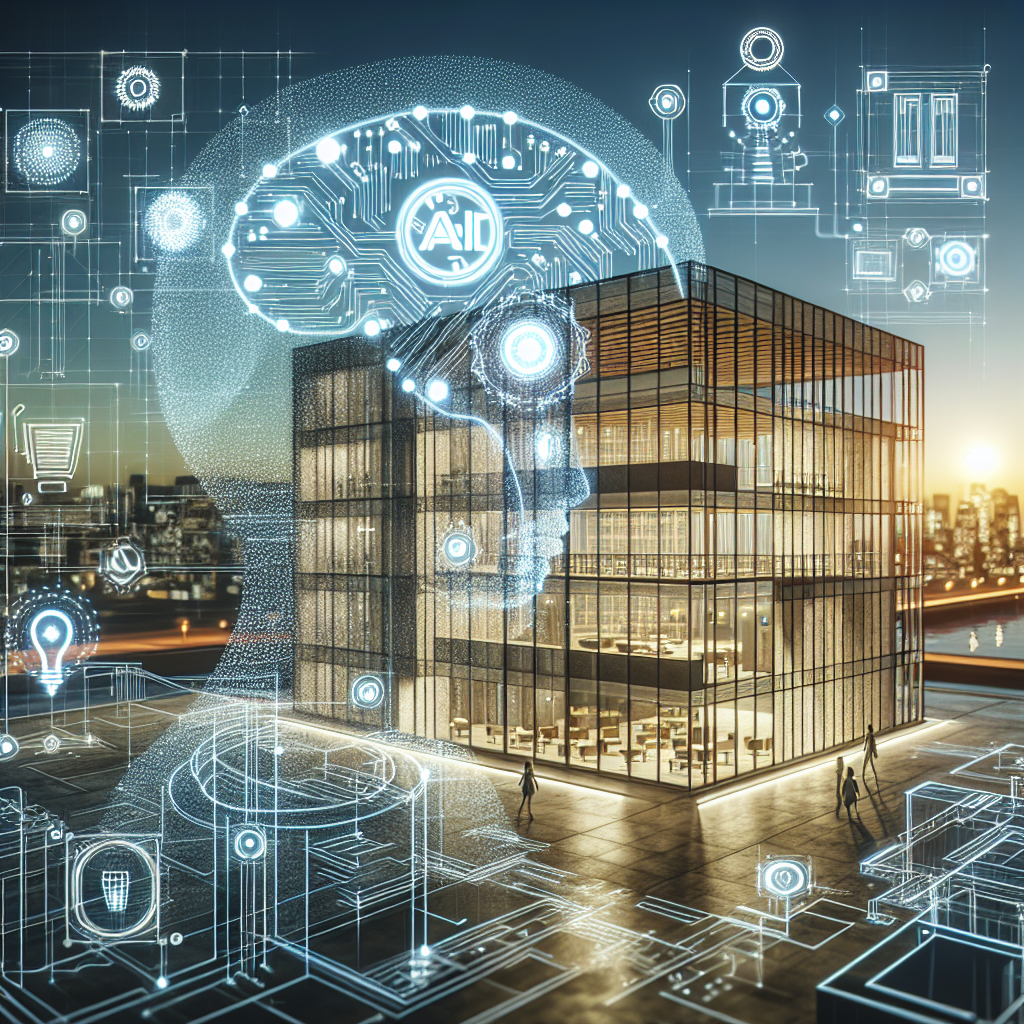AI-Powered Tools for Architectural Lighting Design
In recent years, artificial intelligence (AI) has revolutionized many industries, including architectural lighting design. AI-powered tools are increasingly being used by architects, designers, and lighting professionals to create more efficient, sustainable, and visually stunning lighting designs. These tools use advanced algorithms and machine learning to analyze data, predict outcomes, and optimize lighting solutions. In this article, we will explore the benefits of AI-powered tools for architectural lighting design and how they are transforming the way lighting projects are conceived and implemented.
Benefits of AI-Powered Tools for Architectural Lighting Design
1. Enhanced Design Capabilities: AI-powered tools can analyze vast amounts of data and generate design solutions that are optimized for efficiency, aesthetics, and user experience. These tools can simulate lighting scenarios, predict how different lighting designs will impact the space, and provide recommendations for the best lighting solutions.
2. Energy Efficiency: AI-powered tools can optimize lighting designs to reduce energy consumption and minimize environmental impact. By analyzing factors such as daylight availability, occupancy patterns, and user preferences, these tools can create lighting solutions that are tailored to the specific needs of the space and its occupants.
3. Cost Savings: By optimizing lighting designs for energy efficiency and performance, AI-powered tools can help architects and designers reduce costs associated with lighting installations and maintenance. These tools can also help identify opportunities for energy savings and recommend solutions to maximize cost-effectiveness.
4. Improved User Experience: AI-powered tools can enhance the user experience by creating lighting designs that are tailored to the needs and preferences of the occupants. These tools can analyze user behavior, preferences, and feedback to create lighting solutions that promote comfort, productivity, and well-being.
5. Faster Design Process: AI-powered tools can streamline the design process by automating tasks such as data analysis, simulation, and optimization. By accelerating the design process, these tools can help architects and designers meet project deadlines and deliver high-quality lighting designs in a timely manner.
6. Sustainable Design: AI-powered tools can help architects and designers create sustainable lighting designs that reduce energy consumption, minimize environmental impact, and promote sustainable practices. By optimizing lighting designs for sustainability, these tools can contribute to the overall sustainability of the built environment.
How AI-Powered Tools are Transforming Architectural Lighting Design
AI-powered tools are transforming architectural lighting design in several ways:
1. Data-Driven Design: AI-powered tools use advanced algorithms and machine learning to analyze data from a variety of sources, including building information models (BIM), lighting simulations, and user feedback. By analyzing this data, these tools can generate design solutions that are optimized for efficiency, performance, and user experience.
2. Real-Time Optimization: AI-powered tools can optimize lighting designs in real time by continuously analyzing data and adjusting lighting parameters to meet the specific needs of the space and its occupants. These tools can respond to changes in occupancy, daylight availability, and user preferences to create lighting solutions that are dynamic and adaptive.
3. Personalized Lighting Solutions: AI-powered tools can create personalized lighting solutions that are tailored to the needs and preferences of individual users. By analyzing user behavior, preferences, and feedback, these tools can create lighting designs that promote comfort, productivity, and well-being for each occupant.
4. Collaboration and Integration: AI-powered tools are enabling architects, designers, and lighting professionals to collaborate more effectively and integrate lighting design with other building systems. These tools can facilitate communication, data sharing, and decision-making among stakeholders to create holistic and integrated lighting solutions.
5. Predictive Analysis: AI-powered tools can predict how different lighting designs will impact the space and its occupants by simulating lighting scenarios and analyzing the outcomes. By using predictive analysis, these tools can help architects and designers make informed decisions about lighting design and optimize solutions for performance and user experience.
FAQs
Q: What types of data can AI-powered tools analyze for architectural lighting design?
A: AI-powered tools can analyze a wide range of data, including building information models (BIM), lighting simulations, occupancy patterns, user feedback, daylight availability, and energy consumption. By analyzing this data, these tools can generate design solutions that are optimized for efficiency, performance, and user experience.
Q: How can AI-powered tools optimize lighting designs for energy efficiency?
A: AI-powered tools can optimize lighting designs for energy efficiency by analyzing factors such as daylight availability, occupancy patterns, and user preferences. These tools can create lighting solutions that are tailored to the specific needs of the space and its occupants, reducing energy consumption and minimizing environmental impact.
Q: Can AI-powered tools create personalized lighting solutions for individual users?
A: Yes, AI-powered tools can create personalized lighting solutions that are tailored to the needs and preferences of individual users. By analyzing user behavior, preferences, and feedback, these tools can create lighting designs that promote comfort, productivity, and well-being for each occupant.
Q: How do AI-powered tools streamline the design process for architectural lighting?
A: AI-powered tools streamline the design process by automating tasks such as data analysis, simulation, and optimization. By accelerating the design process, these tools can help architects and designers meet project deadlines and deliver high-quality lighting designs in a timely manner.
Q: How can AI-powered tools contribute to sustainable design practices for architectural lighting?
A: AI-powered tools can contribute to sustainable design practices by optimizing lighting designs for energy efficiency, minimizing environmental impact, and promoting sustainable practices. By creating lighting solutions that reduce energy consumption and promote sustainability, these tools can contribute to the overall sustainability of the built environment.
In conclusion, AI-powered tools are transforming architectural lighting design by enhancing design capabilities, improving energy efficiency, reducing costs, enhancing user experience, streamlining the design process, and promoting sustainable practices. These tools are enabling architects, designers, and lighting professionals to create more efficient, sustainable, and visually stunning lighting designs that meet the specific needs and preferences of the occupants. As AI technology continues to evolve, the possibilities for AI-powered tools in architectural lighting design are endless, and the future of lighting design is bright with the help of AI.

